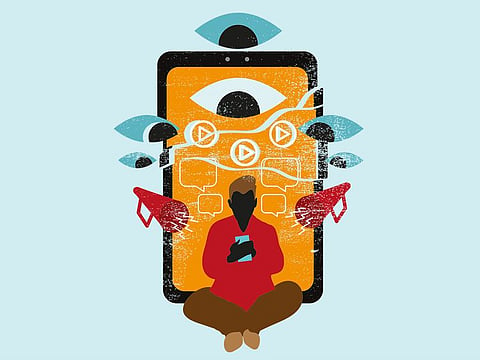India's social media crackdown risks missing the real problem
New privacy rules aim to protect children, but unrealistic measures could backfire

After Australia, it is India’s turn to tighten data privacy to safeguard children from the shifting sands of social media. In one of the toughest measures taken by a country, Australia has banned social media for children under 16.
For now, at least, India is not swinging from the end of the pendulum. Draft rules under the Digital Personal Data Protection Act, 2023 recommend parental consent for children under 18 to open an account on the popular platforms.
Parents must verify their identity and age through allocated options. It is good that the government has asked for feedback and suggestions before finalising these rules because once the ship has sailed, as in India’s case which is the largest consumer of Meta’s Instagram, tweaks cannot be within black-and-white binaries.
For one, what happens to existing accounts populated largely by children barely in double digits? Aided by the world’s second-biggest smartphone market (after China) and cheap internet, India has 362 million Instagram users and is a paradise for Big Tech. Despite its glaring disparities, social media brings the country together. It is not an elite hobby and on the contrary, Facebook and Instagram have filtered down to tier 2 cities with unfettered enthusiasm.
While the government’s move is welcome — and it is unfortunate that the state has to take over a role that should have prominence at home — the age limit of 18 is unrealistic and stretches the mandate. Inversely, it is not age-appropriate. Instead of teaching older teenagers the first steps of adulting and responsibility, it smells of wresting control back. Australia’s age cut-off is borderline and even the age of 13 with checks and balances would be workable if adhered to.
It is what leads up to this age, that requires all hands-on deck. Notably, 40% of children aged 8-12 are active on social media — easily circumventing legal requirements. The social media battleground is middle school and, in several instances, also junior school.
While I do not favour bans, the unrequited love of social media needs strict measures, especially for the young and the immature. With multiple accounts — at least two more than their parents know — children are living flexible roles online, stalking and skirting. The digital is their playground.
The question is also, who enabled it, monetarily or with willing consent? Was it convenience, ignorance or just a disdain for online risks? It is fascinating that parents who outsourced their responsibilities are relieved that the state has stepped in.
Meta and other big tech never hid their profit motives. They did, however, set age limits. Why are tweens on platforms like Snapchat or Instagram? Nine-year-olds are addicted to games like Roblox, and 10-year-old ‘Sephora Babies’ wear make-up to become the new brand of influencers. This is dystopia.
Is parental consent possible at 17 when it was not enforced at 10? You cannot take away a toy already given. Moreover, is ‘consent’ itself attestable?
On the other hand, who monitors adults themselves in need of a masterclass? If there is one demographic that is clueless about the cyber curveballs, it is parents.
How will the government tackle violations especially when the biggest threat to a child’s privacy is closer home? A global survey shows that 75% of parents ‘sharented’ — the practice by adults to overshare information about their children online — with full disclosure of names and public accounts.
An important question is about YouTube. Does it fall under the ambit? YouTube Kids is known to slip in aggressive and self-harm tutorials. In a parody of the popular cartoon Peppa Pig, his brother George shoots himself. On the other side, it is also used for educational purposes. Who decides the line?
In a society that binges on denial, this is a good conversation starter. However, it must go a notch higher and introspect on regulating smartphone usage in schools. India can follow some US schools, where students deposit phones before entering classrooms.
For the moment, the government plans to establish a Data Protection Board, which will function as a digital regulatory body. Ironically, while India looks to safeguard children, it will do so by asking for more data, thereby exposing citizens to more privacy risks. Many studies say social media addiction, similar to gaming is a behavioural disorder.
In addition to children’s data, consumer rights also figure prominently in the draft rules. Users can demand the deletion of their data and seek transparency from companies about why their data is being collected which is a bottomless, unknown pit.
How will consent be enforced here? With an eye on the digital footprint, e-commerce platforms, social media platforms and online gaming platforms with large user bases will be required to erase personal data three years after it is no longer needed. The time limit could be shorter.
The final version of the Digital Protection rules must eschew sweeping generalisations like binding older teens when the need is to nip it in the bud.
It also requires giving clarity on execution, else it would be just another board in a country that has more committees than poor air quality days. Considerable water flows under the data privacy bridge, and it is time to stop the gaps.
Sign up for the Daily Briefing
Get the latest news and updates straight to your inbox



